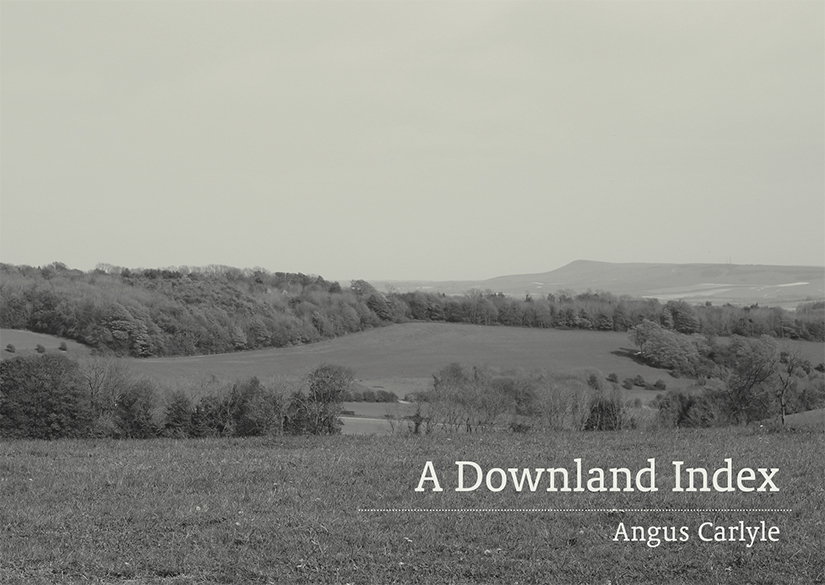
Justin Hopper, author of The Old Weird Albion, recently launched a podcast called Uncanny Landscapes. The first episode contained an interview with Angus Carlyle, a writer I’d not heard of before, but whose books I immediately hunted out.
The interview with Carlyle described something that has troubled me for a while. Carlyle was discussing the compilation of two of his books, Nightblooms and A Downland Index. Nightblooms contains poetry and photographs taken with a smartphone and torchlight while running on the downs. A Downland Index consists of a hundred pieces, each 100 words long.
Both books were initially written as entries on social media platforms – A Downland Index as “an obscure Tumblr”, and Nightblooms on Twitter and Instagram. While the use of these services in the book’s production is not foregrounded, Carlyle says that he was fascinated by the relationship between the timestamps used in these services, which put the uploaded item into an almost-legal framework, and the ambiguity of the thing being timestamped.
Carlyle used this to explore his feelings about nature writing. For Carlyle, such books depend on a “mantle of truth-telling“, but it is hard to know how authentic this is: “Did they really know at this time they described themselves knowing it?” There seems to be a “projection of a certain expertise… the nature writer is a virtuosic inhabitant of the familiar or unfamiliar. Even in the unfamiliar they rely on beautiful writing [or] a transparent reflection of their own emotions, reporting back their experience“. How do you seperate the lived experience from the writer’s later research?
The digital services used acted as witnesses to Carlyle’s immediate presence, exploring “how to use something as clean and digital and unnatural as the internet architecture around these clocks that are constantly logging activities like me uploading things… as a way of inserting some kind of doubt into the process of nature writing”.
It was an exciting discussion, and arrived while I was wrestling with a question around my own writing. I’d been asked to provide documentation of a favourite walk, but there seemed to be various traps around this. I did not want to fall into the role of a man wandering about noticing things then explaining them. Carlyle’s assertion of presense feels like an useful thing to consider.
I’m going to write more about Carlyle’s book soon, particularly A Downland Index. Indexes do not appear often enough in creative writing (one notable exception being JG Ballard’s story The Index.) Carylye begins his book with the index and it’s an interesting way to present a book. Why are there more entries for cars than chalk? How does this format affect my feelings about the coming book?
Justin’s podcast is beautifully produced, and his voice is perfect. The third volume arrived in my RSS reader, and I’m looking forward to listening to it this afternoon.